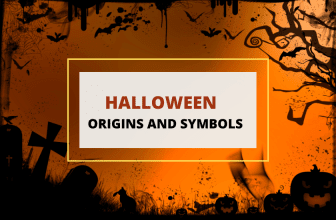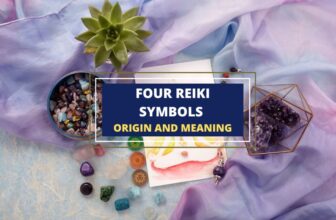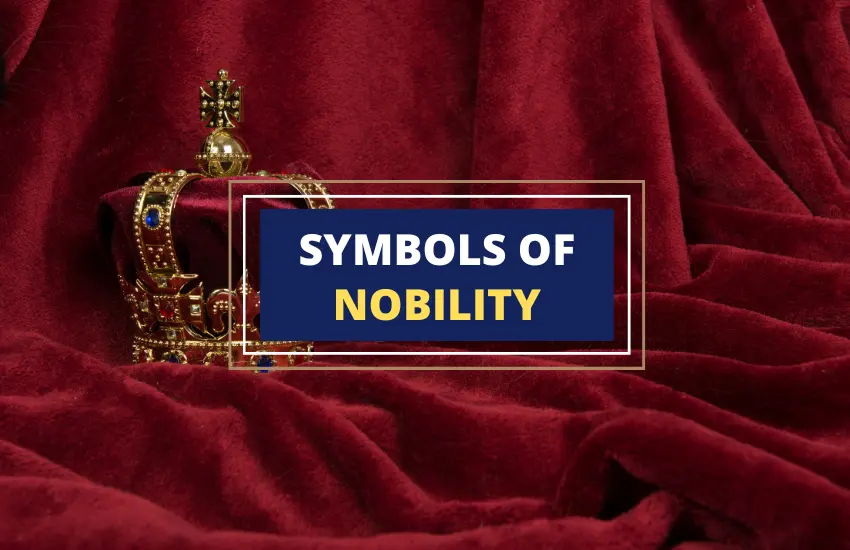
Table of Contents
Are you ready to journey through history and explore the symbols of nobility that have stood the test of time? These symbols have long represented power, wealth, and prestige, from regal lions to ornate crowns.
But what do they mean, and how did they become associated with nobility?
In this article, we’ll explore 19 symbols of nobility, from the majestic unicorn to the heraldic fleur-de-lis.
We’ll delve into each symbol’s history, meanings, and cultural significance, uncovering fascinating stories and intriguing facts along the way.
1. Crown

The crown has been a symbol of nobility for centuries, representing power, authority, and sovereignty. This symbol has existed in various cultures throughout history, often taking on different meanings and designs.
In ancient Egypt, crowns were adorned with the heads of animals, representing the pharaoh’s divine status.
In medieval Europe, crowns were adorned with precious gems and metals, representing the monarch’s wealth and prestige. The crown is a prominent symbol in Christianity, representing God’s authority and his representatives on earth, such as the Pope or bishops.
Kings and queens would wear crowns during their coronation ceremonies, emphasizing their divine right to rule.
Over time, the crown also became associated with the aristocracy, with noble families having their own coronets or tiaras to signify their status.
2. Scepter
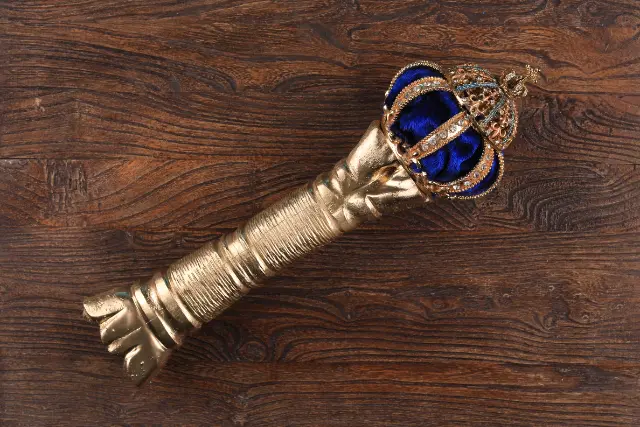
The scepter is another symbol of nobility used by various cultures throughout history. It’s a rod or staff often made of precious metals and jewels, symbolizing authority and power. The scepter was used by kings, queens, emperors, and other rulers to signify their royal power and the ability to govern their subjects.
In ancient Egypt, the pharaohs were often depicted holding a scepter topped with the symbol of Horus, representing their divine right to rule. In medieval Europe, the wand was a key element in coronation ceremonies and was often adorned with religious symbols such as the cross.
In addition to being a symbol of royalty, the scepter also served practical purposes. It could be used as a weapon or to control and direct large groups of people.
The scepter is still used in various ceremonial contexts, such as the British coronation ceremony, where the monarch is handed the wand as a symbol of royal authority.
3. Throne
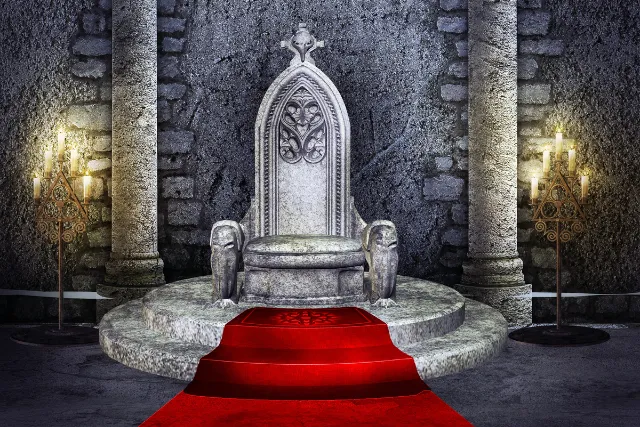
Thrones are often adorned with luxurious materials, symbolizing power, authority, and sovereignty.
In ancient Egypt, the pharaoh’s throne was considered sacred and often decorated with religious symbols such as the ankh and sun disk.
In medieval Europe, thrones were often ornate and made of wood or stone, with intricate carvings and designs representing the monarch’s power and wealth.
The throne has also been used in religious contexts, with the Pope’s throne in the Vatican being a notable example.
In Hinduism, the God Vishnu is often depicted sitting on a throne as a symbol of his divine power and authority. The throne is still used in various ceremonial contexts, such as the British coronation ceremony, where the monarch is crowned and seated.
4. Royal robe
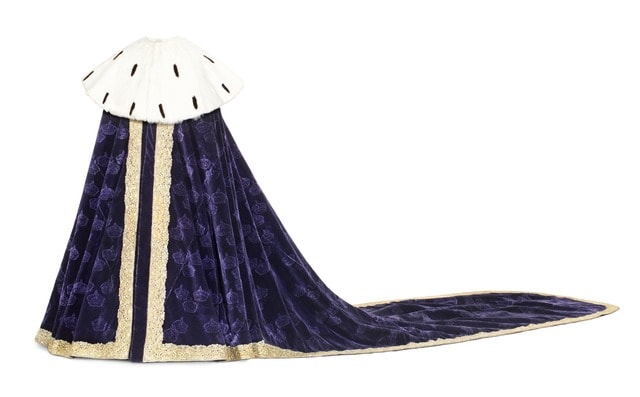
The royal robe is another symbol of nobility used by various cultures throughout history. It’s a garment often made of luxurious materials that symbolize power, authority, and prestige.
In ancient Egypt, the pharaoh’s robe was adorned with intricate designs and was made of linen, considered a symbol of purity and divinity.
In medieval Europe, kings and queens wore elaborate velvet, silk robes, and other luxurious materials, often adorned with fur and jewels, to signify their wealth and status.
The royal robe is also a prominent symbol in Christianity, with the Pope and bishops wearing specific robes to signify their religious authority.
In Japan, the emperor’s robe, known as the Chrysanthemum robe, symbolizes imperial power and is considered one of the most important imperial regalia.
5. Sword of State
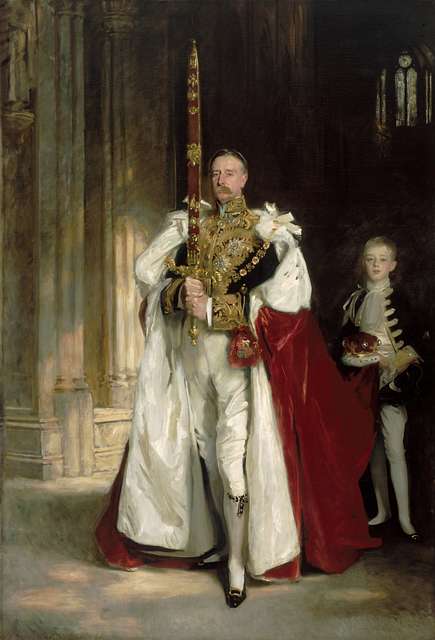
The sword of the state is a symbol of nobility used by various cultures throughout history. It’s a ceremonial sword often adorned with precious metals and jewels and symbolizes power, authority, and justice.
In medieval Europe, the sword of state was a key element in coronation ceremonies and was often passed from the king to the archbishop, who then handed it back to the king as a symbol of his authority to rule.
In Japan, the sword of the state, known as the Imperial Regalia of Japan, is one of the country’s most important symbols of imperial power and is considered a national treasure.
In Islamic culture, the sword of the state, known as the Zulfiqar, symbolizes the Prophet Muhammad and his descendants.
The sword of state is still used today in various ceremonial contexts, such as the State Opening of Parliament in the United Kingdom, where the Lord Great Chamberlain carries the sword.
6. Medals of Honor
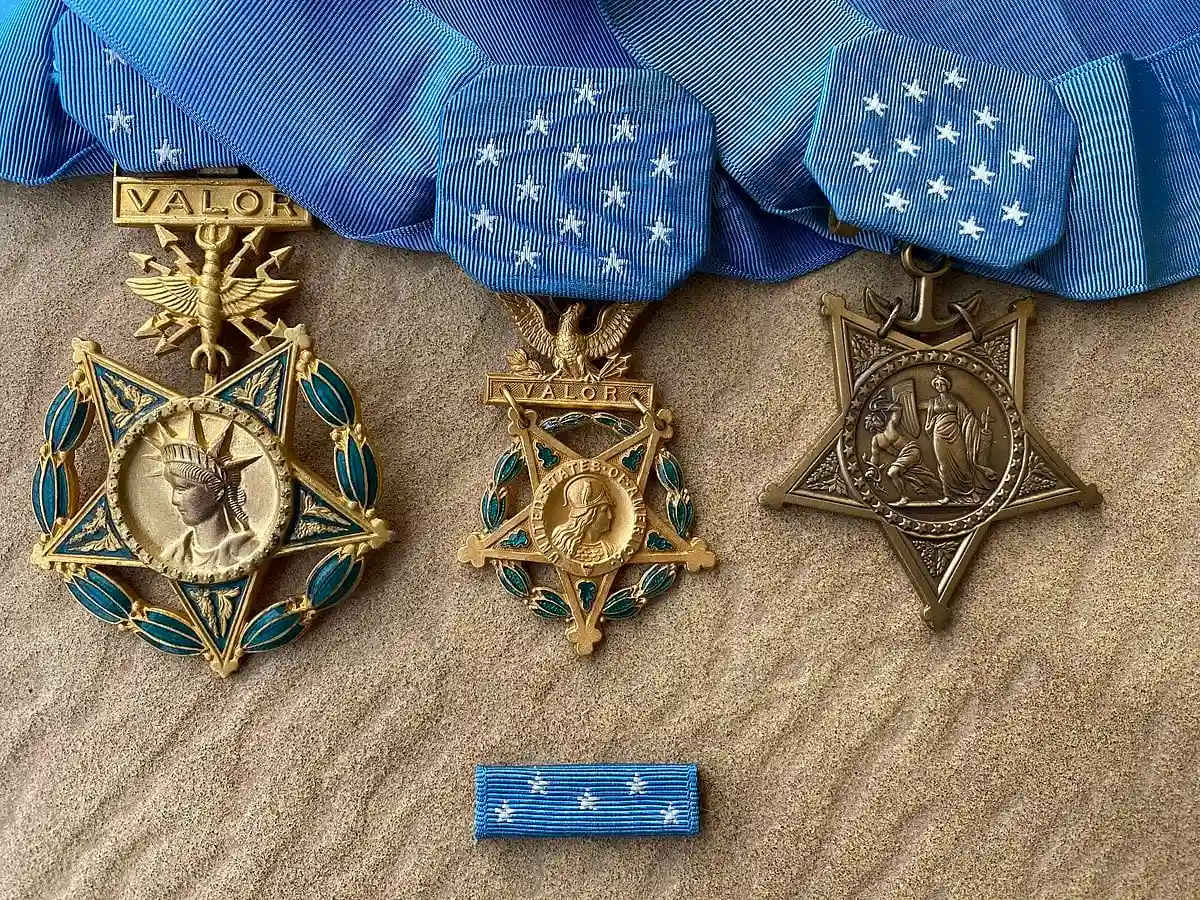
Medals of honor are a symbol of nobility used by various cultures throughout history. They are awards given to individuals for their bravery, heroism, and service to their country or community.
In ancient Rome, soldiers were awarded medals for their military service and were often given land or other rewards.
In modern times, medals of honor are still used by many countries to recognize the achievements of their citizens.
In the U.S., the Medal of Honor is the highest military decoration awarded for acts of bravery in combat.
7. Coat of arms

Coats of arms symbolize nobility used by various cultures throughout history. Their unique design includes symbols and colors representing a person or family’s identity and status.
In medieval Europe, knights and noble families used coats of arms to identify themselves on the battlefield and show their loyalty to their lord.
Today, coats of arms are still used in various contexts, such as by the British royal family, who each have their own coat of arms. Coats of arms are also used by universities, organizations, and businesses to represent their identity and values.
Coats of arms often include symbols such as animals, objects, and colors with specific meanings. For example, lions are often used to represent bravery and strength, while the color red is associated with power and passion.
8. White gloves
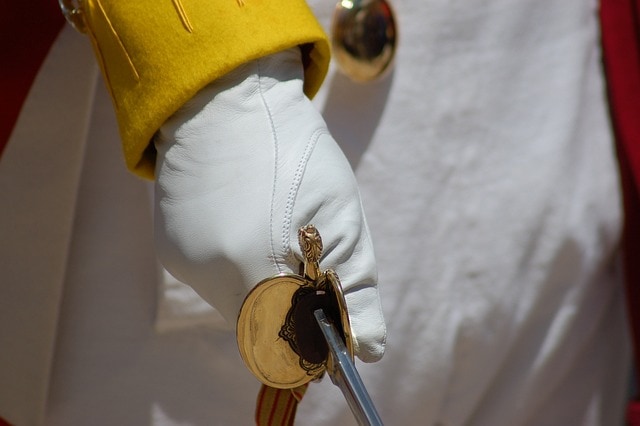
White gloves are a type of glove typically made of white fabric or leather and are often worn as a sign of formality and prestige.
In medieval Europe, white gloves were worn by knights and nobles as a sign of their social status and were often given as gifts to show respect and admiration.
Today, white gloves are still used in various ceremonial contexts, such as by the British royal family, who wear white gloves during formal occasions. White gloves are also worn by military and law enforcement members during formal events and ceremonies.
White gloves are often associated with cleanliness, elegance, and sophistication, symbolizing attention to detail and proper etiquette.
9. Jeweled brooch
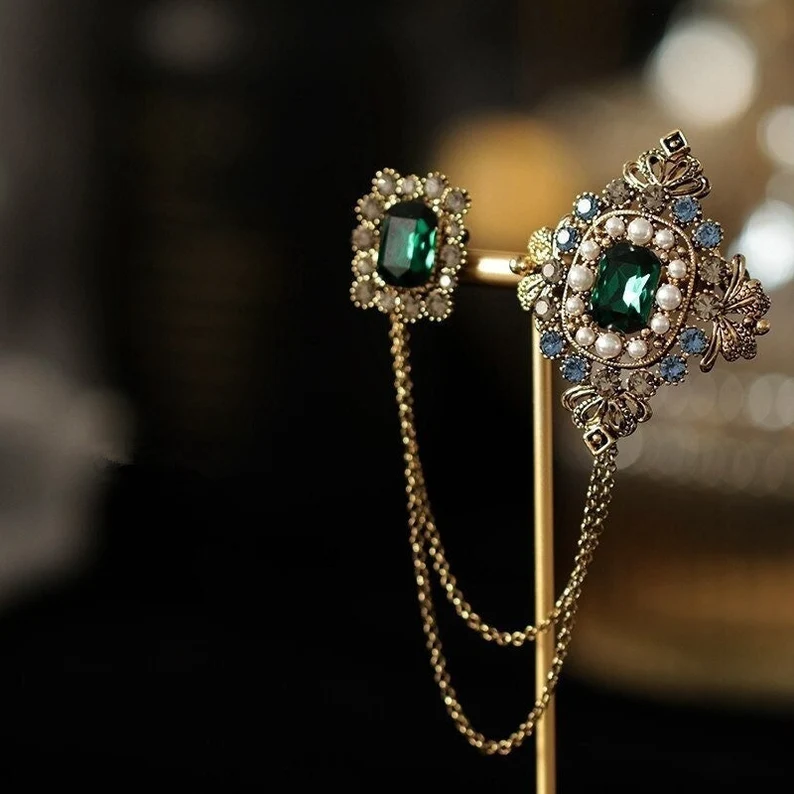
A jeweled brooch symbolizes nobility used by various cultures throughout history. It’s a decorative pin often made of precious metals and gems to signify status, wealth, and elegance.
In ancient Rome, women wore brooches as a sign of their social standing and were often decorated with pearls, emeralds, and other precious stones.
In medieval Europe, brooches were worn by both men and women as a sign of their rank and were often given as gifts to show favor and loyalty.
Today, jeweled brooches are still worn in formal and ceremonial contexts, such as by members of the British royal family, who often wear brooches made of diamonds and other precious stones.
Jeweled brooches are often associated with elegance, sophistication, and luxury and symbolize attention to detail and exquisite craftsmanship.
10. Royal seal
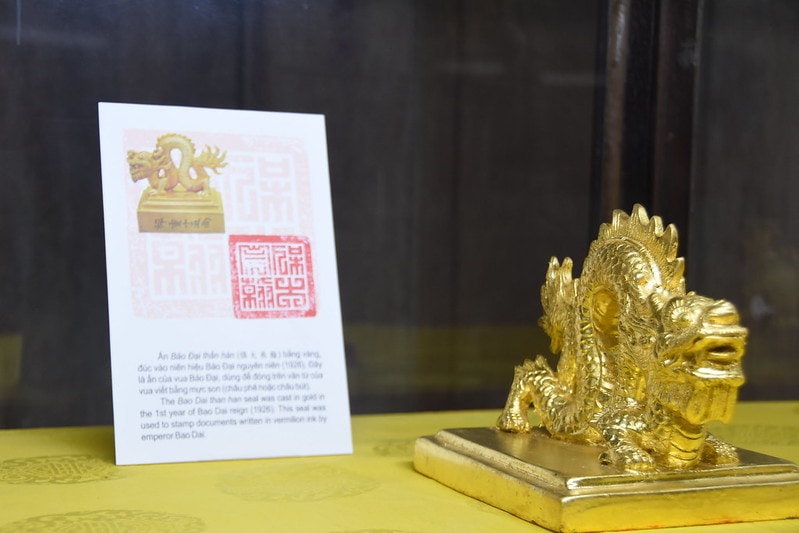
The royal seal is an official emblem often made of wax, metal, or paper and is used to signify the authenticity and authority of royal documents and decrees.
In medieval Europe, royal seals were often made of wax and were pressed onto documents to show that they were official and had been approved by the king or queen.
In Japan, the royal seal, known as the Chrysanthemum seal, is one of the country’s most important symbols of imperial power and is used on official documents and currency.
In the United States, the presidential seal is used to signify the authority of the President and is used on official documents and speeches.
11. Pineapple

The pineapple is a symbol of nobility used by various cultures throughout history. It’s a tropical fruit first discovered in South America and brought to Europe by Spanish explorers in the late 15th century.
The pineapple symbolized wealth and status in Europe and was often displayed at banquets and gatherings to show the host’s wealth and hospitality.
In colonial America, the pineapple symbolized hospitality and welcome, with homeowners displaying pineapples on their front doors or as centerpieces on their dining tables.
The pineapple is often associated with luxury, exoticism, and hospitality, symbolizing the importance of social status and presentation in many cultures.
12. Hunting horn
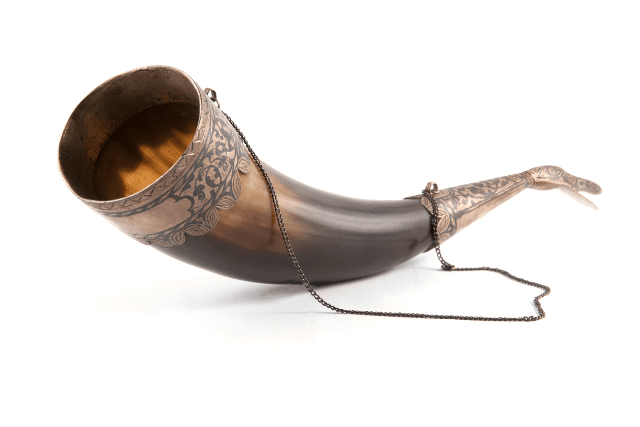
The hunting horn symbolizes nobility used by various cultures throughout history. It’s a brass instrument traditionally used by hunters to communicate with their dogs and signal the start and end of a hunt.
In medieval Europe, hunting was a popular sport among the nobility, and the hunting horn symbolized their wealth and status. Hunting horns were often decorated with intricate designs of precious silver and gold.
Today, hunting horns are still used in various contexts, such as by fox hunters in the United Kingdom, who use the horn to signal the start and end of a hunt. Hunting horns are also used in some military and ceremonial contexts, such as by the United States Marine Corps, which uses the horn to signal the arrival of high-ranking officials.
13. Royal orb
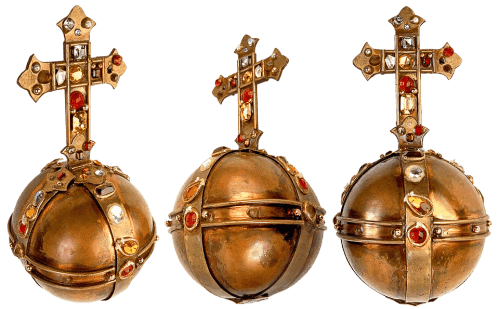
The royal orb symbolizes nobility used by various cultures throughout history. It’s a sphere often made of gold or other precious metals and symbolizes the sovereignty and power of monarchs and other rulers.
In medieval Europe, monarchs often held the royal orb during coronation ceremonies as a symbol of their authority to rule over their subjects. The orb was often adorned with precious stones and was sometimes topped with a cross or another religious symbol.
In other cultures, the royal orb has taken on different forms. In ancient Egypt, the pharaohs were often depicted holding a golden orb known as the Scepter of Heh, which represented their divine right to rule.
While in Japan, the emperor’s royal orb, known as the Yata no Kagami, is one of the country’s most important symbols of imperial power.
14. Laurel wreath
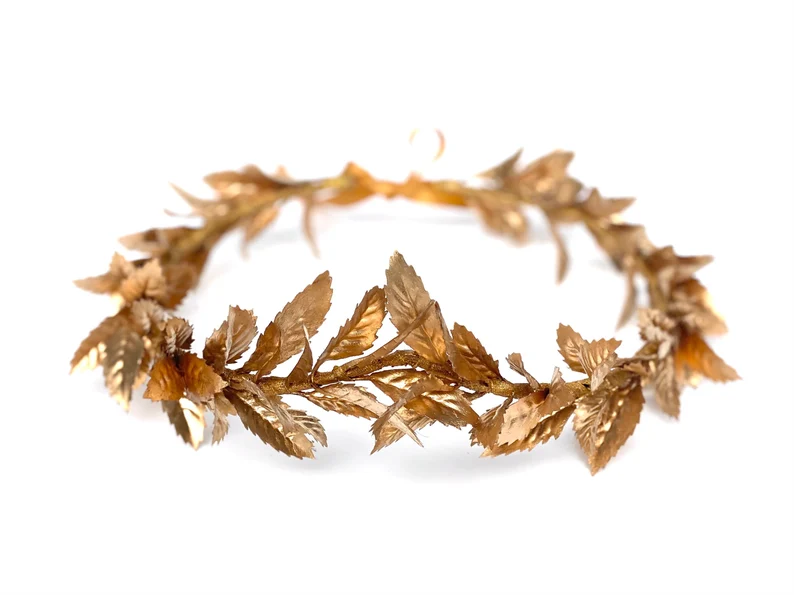
The laurel wreath is a circular wreath made of leaves from the laurel tree and is often used to signify victory, achievement, and honor.
In ancient Greece and Rome, the laurel wreath was awarded to athletes and poets as a symbol of victory and excellence. The wreath was also worn by military leaders and emperors as a symbol of their power and authority.
Today, the laurel wreath is still used in various contexts, such as in the Olympic Games, where gold medalists are awarded a laurel wreath and a medal.
The British military used the wreath in military and ceremonial contexts, who wore a laurel wreath on their caps to signify their rank.
15. Pearls
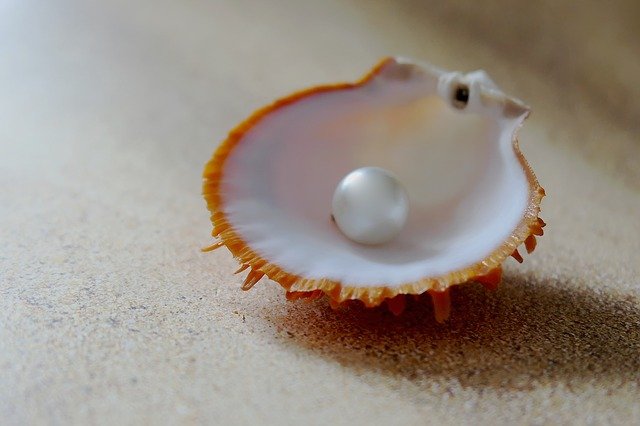
Pearls are a symbol of nobility used by various cultures throughout history. They are a gemstone formed inside oysters and other mollusks and are often associated with elegance, sophistication, and wealth.
In ancient Rome, pearls were worn by the wealthy and were considered a symbol of prestige and status. The Roman general Julius Caesar gave his mistress, Servilia, a pearl valued at the equivalent of $13.5 million in today’s currency.
In Japan, pearls have long been associated with the samurai class, who wore them to symbolize their bravery and power. In some Islamic cultures, pearls are associated with purity and are often used in bridal jewelry.
Today, they are often associated with elegance, refinement, and luxury, symbolizing the importance of material wealth and social status in many cultures.
16. Gold

Gold is often associated with wealth, power, and luxury. In ancient Egypt, gold was considered a symbol of the pharaoh’s divine power and was used to decorate temples and monuments.
In medieval Europe, gold was used to create jewelry and other regalia for the nobility and was often associated with the power and status of monarchs.
Today, gold is still a popular symbol of nobility and is often used in high-end jewelry and fashion. It’s also used in various cultural and religious contexts, such as in the Catholic Church, where gold is used to decorate religious objects and vestments.
Gold is often associated with luxury, prestige, and power, symbolizing the importance of material wealth and status in many cultures.
17. Blood

Blood is a symbol of nobility used by various cultures throughout history. It’s often associated with lineage, family heritage, and social status.
In medieval Europe, blood was considered a crucial factor in determining a person’s social status and was often used to justify the superiority of the nobility over the common people.
In ancient Rome, the bloodline of an individual was considered an important factor in determining their eligibility for political office.
Today, the idea of blood as a symbol of nobility has been largely replaced by other factors, such as wealth and education. The concept of a noble bloodline is important in some contexts, such as in some monarchies where lineage determines succession.
18. Sun

The sun is a symbol of nobility used by various cultures throughout history. It’s often associated with power, energy, and vitality, symbolizing the importance of the heavens and celestial bodies in many cultures.
In ancient Egypt, the sun God Ra was the ruler of the universe and the bringer of life. In ancient Greece, the sun was associated with the God Apollo, often depicted with a golden halo of rays around his head.
In many cultures, the sun is associated with royalty and nobility. And in Japan, for example, the imperial family is said to be descended from the sun goddess Amaterasu. In medieval Europe, the sun was often used in royal heraldry and was associated with the power and majesty of monarchs.
19. Axe head
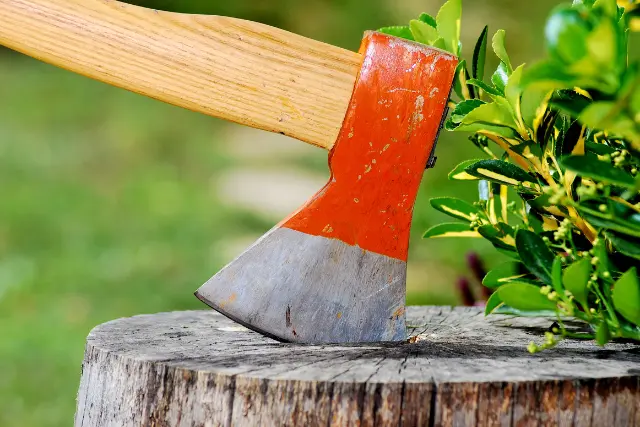
The axe head symbolizes nobility used by various cultures throughout history. It’s a tool for cutting wood and other materials but has also been used to symbolize power and authority.
In medieval Europe, knights and other nobles often used the axe as a weapon associated with their status and power. The axe was also used in executions, and executioners were often considered members of a special class of people with a unique status and power.
In some Native American cultures, the axe head symbolized the power and strength of tribal chiefs and leaders. The axe head was often decorated with intricate designs and was used in ceremonial contexts.
Wrapping Up
As we conclude our journey through 19 symbols of nobility, we can see these iconic images’ enduring power and influence. These symbols capture the imagination and inspire us to reach for greatness.
We hope that these symbols of nobility will continue to inspire you to strive for greatness and reach for the stars. We hope this journey has been as enlightening and inspiring for you as it has been for us and that you will continue exploring the fascinating world of symbolism and meaning.
Similar Articles:
15 Powerful Symbols of Life (And What They Mean)
Top 19 Symbols of Leadership from Around the World
24 Powerful Symbols That Represent Freedom (And Their Origins)






